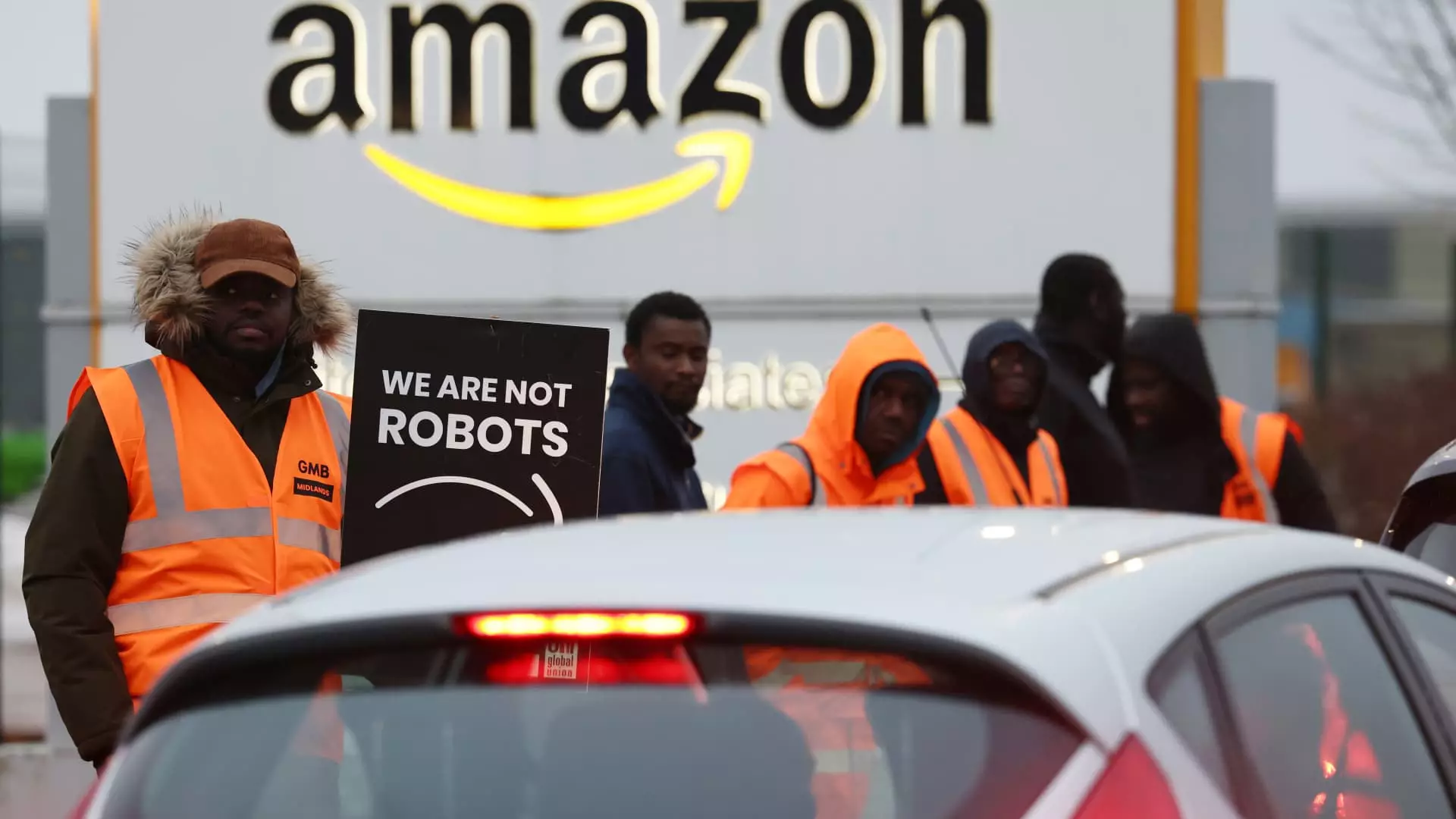In recent years, the narrative surrounding automation has shifted from optimistic tales of increased efficiency to a stark warning of job displacement. Amazon’s announcement of deploying its millionth robot, coupled with the integration of cutting-edge AI models like DeepFleet, highlights a growing reliance on machines to reshape logistics and manufacturing. While the corporation touts the impressive milestone as a testament to technological prowess, it conveniently sidesteps the human cost. The claim that robots are merely augmenting human roles and creating new skills is misleading. The reality is that automation systems, particularly in a landscape where millions of jobs are already under threat, serve primarily as tools for cost-cutting and productivity enhancement at the expense of human workers. Such developments cement Amazon’s position as a behemoth of automation, yet they reveal a departure from genuine progress toward a worker-centered economy. Instead, they showcase a strategic pivot favoring shareholder profits, often at the expense of the very workers whose livelihoods they threaten.
The False Promise of Job Creation and Skill Enhancement
Amazon’s assertion that robots are generating new employment opportunities in maintenance and technical roles is an oversimplification, bordering on propaganda. The expansion of AI and robotics indeed demands specialized skills; however, the structure of these jobs tends to favor a small subset of highly skilled employees, leaving the broader workforce in a precarious position. The narrative that automation can be seamlessly integrated without significant social costs overlooks the broader implications for middle and lower-income workers. The reality suggests that automation breeds a hollowed-out labor market, where routine tasks are eliminated, leaving displaced workers scrambling for any new role that might require advanced technical skills. The “new opportunities” are often reserved for a select few, while the bulk of the workforce faces redundancy or irreversible downward mobility. Amazon’s new facilities may indeed employ more sophisticated personnel, but this does not offset the erosion of ordinary employment opportunities across the entire sector.
The Irony of AI’s Dual Role: Efficiency at a Cost
Amazon’s embrace of AI-driven logistics and robotics underscores an uncomfortable paradox: technological progress that promises faster deliveries and lower costs brings with it a silent, yet profound social toll. Amazon’s CEO Andy Jassy’s candid acknowledgment that AI will lead to “fewer people doing some of the jobs” reveals a raw acknowledgment of what many industry insiders prefer to conceal. While the company might argue that AI positions itself as a productivity enhancer, it ultimately functions as a badge of efficiency that suppresses wages and reduces labor costs. The reduction of over 27,000 jobs in recent years is not an anomaly but a glimpse into a disturbing trend that many other tech giants are following. Layoffs driven by AI investments are reshaping the labor landscape, leaving millions in constant job insecurity. The overarching message is clear: automation is not merely about progress; it’s about consolidating power and maximizing profit margins through the systematic devaluation of human labor.
Unchecked Automation: A Threat to Social Stability?
The pivot toward AI and robotics may appear as an inevitable march of progress, but it is also a gamble with social stability. Displacing hundreds of thousands of workers undermines the social contract, fueled by promises of new opportunities that rarely materialize for the majority. As companies continue to cut jobs, labor markets become more fragmented, and income inequality deepens. This trend is compounded by the fact that many of the displaced workers are in the most vulnerable segments of society—blue-collar, middle-aged, and less digitally savvy—making their odds of recovery slim. The idea that AI will elevate everyone to new heights of prosperity is a myth. Instead, it risks creating a bifurcated society where a small elite benefits from automation-driven wealth surges, while the many struggle with unemployment and economic precarity. If unchecked, this trajectory threatens the social fabric, fueling discontent and destabilizing foundations of democratic liberalism that rely on shared opportunity and social mobility.
A Call for Responsible Innovation
The current narrative, pushed strongly by industry leaders like Amazon and echoed by other tech giants, champions automation as an unmitigated success. But true progress demands critical reflection. It calls for policies and corporate accountability that prioritize human welfare, ensure fair transition mechanisms, and safeguard decent jobs. Rhetoric that automation is purely beneficial is shortsighted, masking a reality where technological advancements are often used as tools for corporate greed rather than societal benefit. A balanced approach would include retraining programs, social safety nets, and policies that discourage excessive reliance on automation as a means to suppress wages. Without such measures, the widening chasm between technological progress and social justice will only deepen, risking a future where machines—not people—drive the economy.
Although automation can deliver undeniable efficiencies and innovations, overlooking its social implications is a dangerous gamble. Progress should not come at the expense of the middle class and vulnerable workers. The challenge lies in ensuring that technological advancements serve a broader societal purpose rather than becoming instruments of economic disparity. The onus now falls on policymakers, business leaders, and society at large to demand a responsible, equitable path forward.

